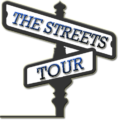An attractive quality of stand-up paddleboarding, one that continues to draw many first-timers to get started with the watersport, is its simple learning curve. Once atop the board, navigation and balance tend to come rather quickly.
Those who stick with SUP may soon find themselves wanting to take their experience further. For some, this can mean exploring exciting new locations, such as secret bays or expansive lakes, travelling the country to seek out novel landscapes. For others, however, it is the challenge of improving one’s own performance, with the appeal of pushing oneself further and faster on the water being paramount.
If the latter sounds familiar and you would like to improve your SUP performance, then we have four tips taken from paddleboarding professionals of how you can begin upping your game.
Proper Positioning…
The most frequently shared advice from SUP experts is about one’s position on the board. The center is the ideal location for almost all paddleboarding purposes and those who are looking to improve their maneuverability or speed should first consider where they are standing.
Beginners should consider marking a line or sticking tape to do so, from the nose of their board down to the exact center point. This will ensure that feet are not only kept on opposite sides of the board and with a clear indication of where the center of the board is. If feet are properly positioned here, weight will be distributed evenly and paddleboard performance will be optimized.
…And Proper Posture
Once you’re positioned properly, it is time to begin checking your posture. Form can make a considerable difference and for those looking to reach higher speeds or respond better to the water, it makes all the difference.
The most important part of paddleboarding form is that the back is kept perfectly straight. Slouching reduces strength and can affect balance, so be sure to stand upright and with relaxed shoulders. Knees can be slightly bent to help with balance and paddling power too.
Consider Your Equipment
If you’re still using the same paddle and board as when you started out, it might be time to reconsider your equipment. Different designs can help to support your performance, with professional paddleboarders having a great deal of advice for what works and what doesn’t. Every element of your equipment should be considered, from the length of your board to the width of your paddle, as well as the comfort and breathability of your clothing too.
Record Your Performance
Aside from watching what other paddleboarders do, reflecting on your own performance is the most valuable habit. Cameras can easily be mounted onto a board, both the nose and tail, allowing video footage of your performance to be captured during a session. By reviewing this footage, you will be able to highlight bad habits and mistakes, ensuring that they aren’t repeated in future. This method of seeing one’s own successes and failings is a tried and tested way of improving ability that takes place in all sports.


